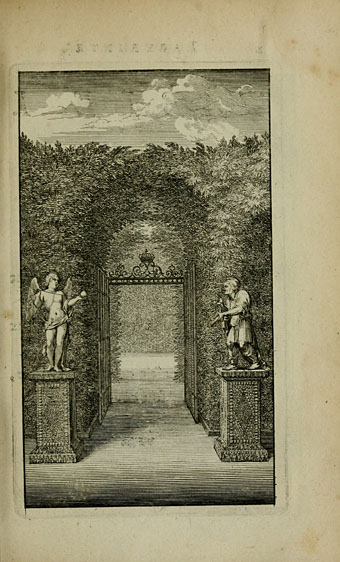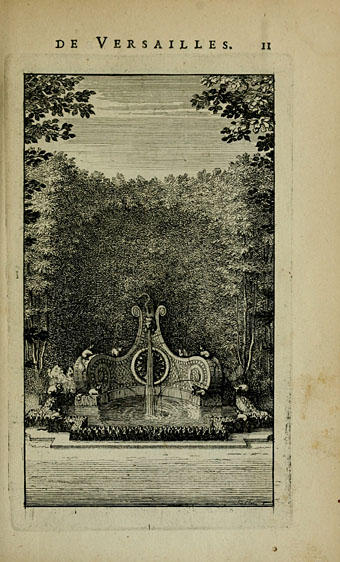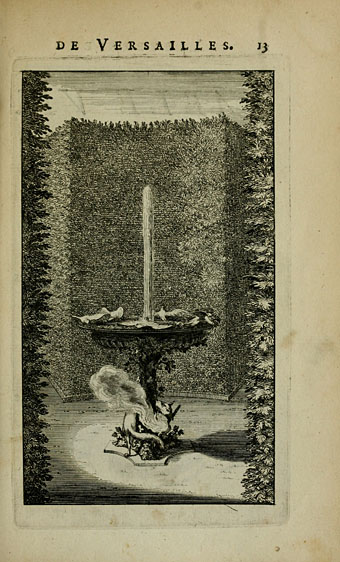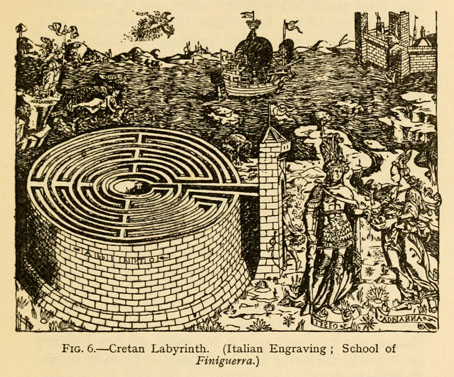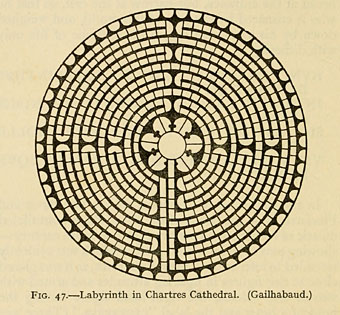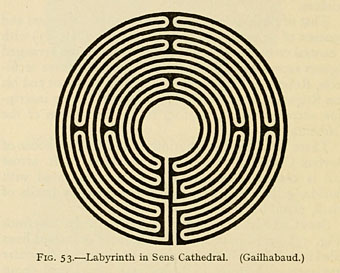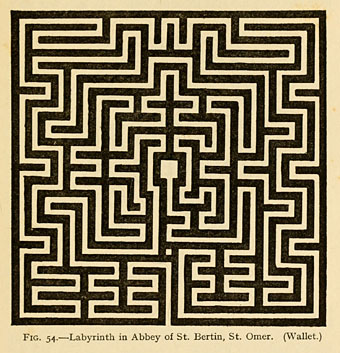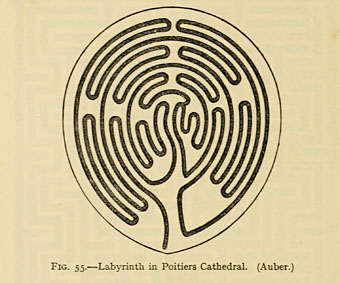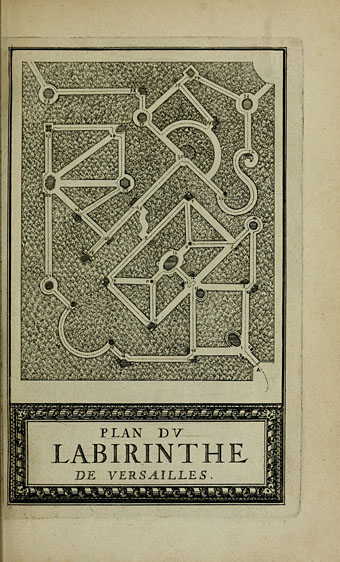
I ought to have mentioned this last week since a plan of the lost labyrinth of Versailles appears in the William Henry Matthews book. The labyrinth was completed for Louis XIV in 1677, and is unusual for being a series of paths without a central focus, and also a very ornamental affair containing thirty-nine fountains with accompanying statuary which depicted the animals from Aesop’s fables. The latter were a suggestion of Charles Perrault from whose Labyrinte de Versailles (1677) these illustrations are taken. The etchings are by Sébastian Le Clerc whose map shows the route that visitors would have taken in order to visit each fountain in turn. The book may be browsed here or downloaded here.
The labyrinth was removed in 1778 but Wikipedia has a page with more information including some colour prints of the fountains, and also an English list of the fables depicted.
